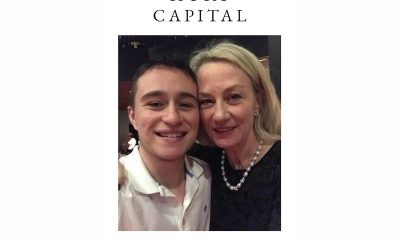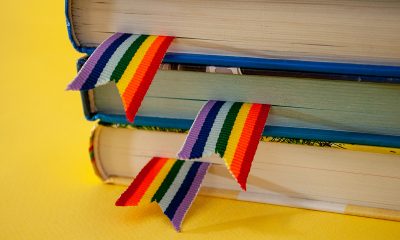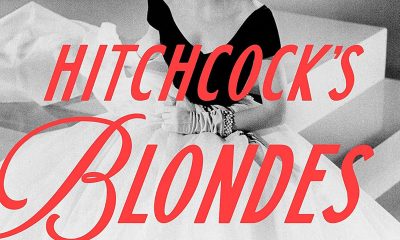Books
Queer author Carmen Maria Machado draws raves for ‘Her Body’ short story collection
Writer says family storytelling tradition, collegiate experiences inform her fiction
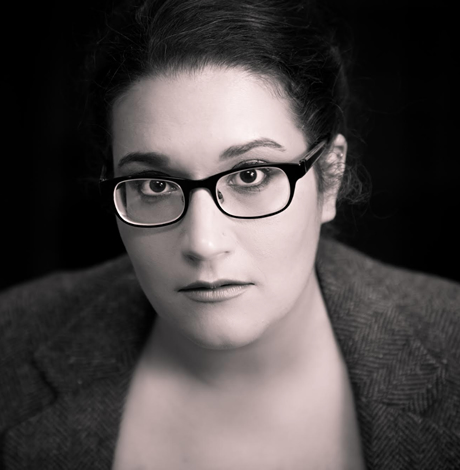
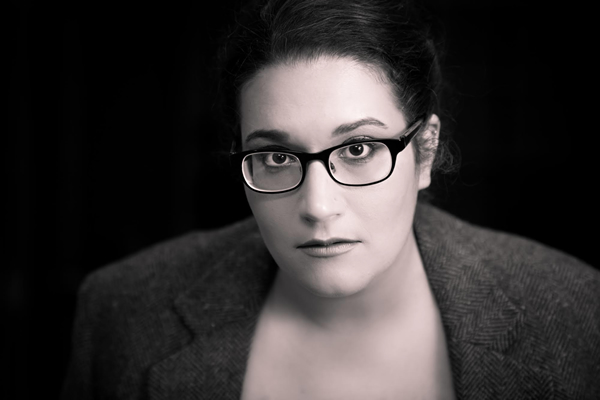
Author Carmen Maria Machado says her love of reading and the storytelling tradition of her family deeply inform her work. (Photo courtesy Tom Storm Photography)
All fiction writers need imagination. Carmen Maria Machado’s is so vivid, she sometimes passes it on to her characters.
“Sometimes I sat on the porch and gave imaginary interviews to NPR personalities,” says the narrator of “The Resident,” a short story in Machado’s debut collection “Her Body and Other Parties.” “”When I write, I feel like I’m being hypnotized,’ I told Terry Gross. ‘It was at that moment I knew everything was going to change,’ I told Ira Glass.’”
For most writers, such daydreams remain mere fantasies. Few authors become literary superstars or suddenly find themselves under the spotlight on NPR. Yet this is what happened to Machado, a 31-year-old queer writer.
Her short story collection “Her Body and Other Parties” (Graywolf Press), released in October, has received the attention usually bestowed on the work of literary giants such as Toni Morrison or Michael Cunningham. “Parties” was a finalist for the National Book Award, the Kirkus Prize and the National Book Critics Circle’s John Leonard Prize. It won the Bard Fiction Prize. It’s her first full-length work though she has had many of her stories published in various outlets.
“Parties” is unlike any previous short story collection. Women’s bodies, queerness and feminism pulsate through the tales in “Parties” from “Inventory” to “Difficult at Parties.” Yet the book isn’t didactic or the least bit doctrinaire. Like the horror movie “Get Out,” the stories pop with horror and comedy.
Women have joyous sex, even as people die worldwide from a virus spread by physical contact. A sexual assault survivor hears the inner thoughts of characters in porn. A novella “Especially Heinous: 272 Views of Law & Order: SVU,” is a piercing, but hilarious send up of “Law & Order: SVU” and its fascination with sexually traumatized women.
“The collection is that hallowed thing: an example of almost preposterous talent,” the Los Angeles Times said of “Her Body and Other Parties,” “that also encapsulates something vital but previously diffuse about the moment.”
Storytelling, Machado says during a Blade phone interview, is part of her family tradition. Her paternal grandfather came to the U.S. from Cuba; his wife was from Austria. They met as immigrants in New York. Her mother’s family is white.
“Storytelling, especially on the Cuban side of the family, is important,” Machado, an Allentown, Pa., native who now lives with her wife Val in Philadelphia, says. “My grandfather has dementia, but we can still recite stories back to him and he remembers.”
She incorporates that oral storytelling tradition in her work. Her love of reading and writing, as one might imagine, has deep roots.
As a child, Machado read voraciously. She went to the library and devoured books like candy, reading at breakneck speed, she says.
“All kids write stories. I wrote them and typed them out. I always loved the idea of being a writer.”
Machado sent her stories to publishers and authors. Her letters yielded no publishing offers, but, “my wife who works in publishing says that some delighted interns at the publishing houses must have loved my letters.”
To her surprise and delight, Machado heard back from Livia Bitton-Jackson, a Holocaust survivor and author of the memoir “I Have Lived a Thousand Years: Growing Up in the Holocaust.”
“In the book, Bitton-Jackson talked about how the poems she wrote were left behind when she was taken by the Nazis,” she says. “I wrote to her and asked what happened to her poems. One day, my mom, who was confused by it, said, ‘There’s a letter for you from Israel.’”
Bitton-Jackson told Machado that she didn’t get her poems back, but that she’d kept on writing.
“She asked me about myself,” she says. “It felt magical that a real person — a writer — wrote back to me.”
When she was young in the 1990s, Machado didn’t understand that she was queer.
“I had crushes on girls, but I didn’t think of it in that way. I didn’t have any framework,” she says. “I didn’t know anyone who was out and queer until I went to college.”
Machado graduated from American University in 2008 with a degree in visual media. During her years in Washington, she read the Blade as she was coming out.
“I thought, ‘Oh this is who I am,’” she says. “My parents were pretty chill, though they were a bit confused because I was lesbian/bi. They didn’t quite understand why I would date a guy, but they were great about it.”
Attitudes about being queer were different for some of Machado’s extended family.
“Some of them were very religious,” she says, “but I didn’t have to deal with a lot of that kind of nonsense. I feel extremely lucky.”
Machado went to college to study journalism, but quickly realized that wasn’t what she wanted to do, so she switched to literature and photography.
“I wanted to get loose with my sentences,” Machado says. “I didn’t have the blood thirst, the nose for news, to be a reporter.”
After graduating, Machado moved to Berkeley, Calif., working random jobs during the recession and enduring a bad break-up, which she says made her miserable. But she didn’t stop writing. A creative writing teacher, whom she calls “a lovely human being,” encouraged her to keep writing stories.
Her stint at the Iowa Writers’ Workshop from 2010-2012, where she earned a master’s degree, changed everything professionally for her.
“Suddenly, I was getting paid to be in grad school and write,” she says. “I didn’t have to worry about finding jobs. I had good health insurance. I could go to therapy and figure out my aesthetic.”
And, of course, her success with “Her Body” has helped fuel ongoing efforts. “House in Indiana,” a memoir about same-sex domestic violence is due in 2019.
“Same-sex violence isn’t talked about,” Machado says. “I wanted to talk about it.”
Kathi Wolfe, a writer and a poet, is a regular contributor to the Blade.

This past year, you’ve often had to make do.
Saving money here, resources there, being inventive and innovative. It’s a talent you’ve honed, but isn’t it time to have the best? Yep, so grab these Ten Best of 2025 books for your new year pleasures.
Nonfiction
Health care is on everyone’s mind now, and “A Living: Working-Class Americans Talk to Their Doctor” by Michael D. Stein, M.D. (Melville House, $26.99) lets you peek into health care from the point of view of a doctor who treats “front-line workers” and those who experience poverty and homelessness. It’s shocking, an eye-opening book, a skinny, quick-to-read one that needs to be read now.
If you’ve been doing eldercare or caring for any loved one, then “How to Lose Your Mother: A Daughter’s Memoir” by Molly Jong-Fast (Viking, $28) needs to be in your plans for the coming year. It’s a memoir, but also a biography of Jong-Fast’s mother, Erica Jong, and the story of love, illness, and living through the chaos of serious disease with humor and grace. You’ll like this book especially if you were a fan of the author’s late mother.
Another memoir you can’t miss this year is “Between the Devil and the Deep Blue Sea: A Veteran’s Memoir” by Khadijah Queen (Legacy Lit, $30.00). It’s the story of one woman’s determination to get out of poverty and get an education, and to keep her head above water while she goes below water by joining the U.S. Navy. This is a story that will keep you glued to your seat, all the way through.
Self-improvement is something you might think about tackling in the new year, and “Replaceable You: Adventures in Human Anatomy” by Mary Roach (W.W. Norton & Company, $28.99) is a lighthearted – yet real and informative – look at the things inside and outside your body that can be replaced or changed. New nose job? Transplant, new dental work? Learn how you can become the Bionic Person in real life, and laugh while you’re doing it.
The science lover inside you will want to read “The Grave Robber: The Biggest Stolen Artifacts Case in FBI History and the Bureau’s Quest to Set Things Right” by Tim Carpenter (Harper Horizon, $29.99). A history lover will also want it, as will anyone with a craving for true crime, memoir, FBI procedural books, and travel books. It’s the story of a man who spent his life stealing objects from graves around the world, and an FBI agent’s obsession with securing the objects and returning them. It’s a fascinating read, with just a little bit of gruesome thrown in for fun.
Fiction
Speaking of a little bit of scariness, “Don’t Forget Me, Little Bessie” by James Lee Burke (Atlantic Monthly Press, $28) is the story of a girl named Bessie and her involvement with a cloven-hooved being who dogs her all her life. Set in still-wild south Texas, it’s a little bit western, part paranormal, and completely full of enjoyment.
“Evensong” by Stewart O’Nan (Atlantic Monthly Press, $28) is a layered novel of women’s friendships as they age together and support one another. The characters are warm and funny, there are a few times when your heart will sit in your throat, and you won’t be sorry you read it. It’s just plain irresistible.
If you need a dark tale for what’s left of a dark winter season, then “One of Us” by Dan Chaon (Henry Holt, $28), it it. It’s the story of twins who become orphaned when their Mama dies, ending up with a man who owns a traveling freak show, and who promises to care for them. But they can’t ever forget that a nefarious con man is looking for them; those kids can talk to one another without saying a word, and he’s going to make lots of money off them. This is a sharp, clever novel that fans of the “circus” genre shouldn’t miss.
“When the Harvest Comes” by Denne Michele Norris (Random House, $28) is a wonderful romance, a boy-meets-boy with a little spice and a lot of strife. Davis loves Everett but as their wedding day draws near, doubts begin to creep in. There’s homophobia on both sides of their families, and no small amount of racism. Beware that there’s some light explicitness in this book, but if you love a good love story, you’ll love this.
Another layered tale you’ll enjoy is “The Elements” by John Boyne (Henry Holt, $29.99), a twisty bunch of short stories that connect in a series of arcs that begin on an island near Dublin. It’s about love, death, revenge, and horror, a little like The Twilight Zone, but without the paranormal. You won’t want to put down, so be warned.
If you need more ideas, head to your local library or bookstore and ask the staff there for their favorite reads of 2025. They’ll fill your book bag and your new year with goodness.
Season’s readings!
The Blade may receive commissions from qualifying purchases made via this post.
Books
This gay author sees dead people

‘Are You There Spirit? It’s Me, Travis’
By Travis Holp
c.2025, Spiegel and Grau
$28/240 pages
Your dad sent you a penny the other day, minted in his birth year.
They say pennies from heaven are a sign of some sort, and that makes sense: You’ve been thinking about him a lot lately. Some might scoff, but the idea that a lost loved one is trying to tell you he’s OK is comforting. So read the new book, “Are You There, Spirit? It’s Me, Travis” by Travis Holp, and keep your eyes open.

Ever since he was a young boy growing up just outside Dayton, Ohio, Travis Holp wanted to be a writer. He also wanted to say that he was gay but his conservative parents believed his gayness was some sort of phase. That, and bullying made him hide who he was.
He also had to hide his nascent ability to communicate with people who had died, through an entity he calls “Spirit.” Eventually, though it left him with psychological scars and a drinking problem he’s since overcome, Holp was finally able to talk about his gayness and reveal his otherworldly ability.
Getting some people to believe that he speaks to the dead is still a tall order. Spirit helps naysayers, as well as Holp himself.
Spirit, he says, isn’t a person or an essence; Spirit is love. Spirit is a conduit of healing and energy, speaking through Holp in symbolic messages, feelings, and through synchronistic events. For example, Holp says coincidences are not coincidental; they’re ways for loved ones to convey messages of healing and energy.
To tap into your own healing Spirit, Holp says to trust yourself when you think you’ve received a healing message. Ignore your ego, but listen to your inner voice. Remember that Spirit won’t work on any fixed timeline, and its only purpose is to exist.
And keep in mind that “anything is possible because you are an unlimited being.”
You’re going to want very much to like “Are You There, Spirit? It’s Me, Travis.” The cover photo of author Travis Holp will make you smile. Alas, what you’ll find in here is hard to read, not due to content but for lack of focus.
What’s inside this book is scattered and repetitious. Love, energy, healing, faith, and fear are words that are used often – so often, in fact, that many pages feel like they’ve been recycled, or like you’ve entered a time warp that moves you backward, page-wise. Yes, there are uplifting accounts of readings that Holp has done with clients here, and they’re exciting but there are too few of them. When you find them, you’ll love them. They may make you cry. They’re exactly what you need, if you grieve. Just not enough.
This isn’t a terrible book, but its audience might be narrow. It absolutely needs more stories, less sentiment; more tales, less transcendence and if that’s your aim, go elsewhere. But if your soul cries for comfort after loss, “Are You There, Spirit? It’s Me, Travis” might still make sense.
The Blade may receive commissions from qualifying purchases made via this post.
Books
‘Dogs of Venice’ looks at love lost and rediscovered
A solo holiday trip to Italy takes unexpected turn

‘The Dogs of Venice’
By Steven Crowley
c.2025, G.P. Putnam & Sons
$20/65 pages
One person.
Two, 12, 20, you can still feel alone in a crowded room if it’s a place you don’t want to be. People say, though, that that’s no way to do the holidays; you’re supposed to Make Merry, even when your heart’s not in it. You’re supposed to feel happy, no matter what – even when, as in “The Dogs of Venice” by Steven Rowley, the Christmas tinsel seems tarnished.

Right up until the plane door closed, Paul held hope that Darren would decide to come on the vacation they’d planned for and saved for, for months.
Alas, Darren was a no-show, which was not really a surprise. Three weeks before the departure, he’d announced that their marriage wasn’t working for him anymore, and that he wanted a divorce. Paul had said he was going on the vacation anyhow. Why waste a perfectly good flight, or an already-booked B&B? He was going to Venice.
Darren just rolled his eyes.
Was that a metaphor for their entire marriage? Darren had always accused Paul of wanting too much. He indicated now that he felt stifled. Still, Darren’s unhappiness hit Paul broadside and so there was Paul, alone in a romantic Italian city, fighting with an espresso machine in a loft owned by someone who looked like a frozen-food spokeswoman.
He couldn’t speak or understand Italian very well. He didn’t know his way around, and he got lost often. But he felt anchored by a dog.
The dog – he liked to call it his dog – was a random stray, like so many others wandering around Venice unleashed, but this dog’s confidence and insouciant manner inspired Paul. If a dog could be like that, well, why couldn’t he?
He knew he wasn’t unlovable but solo holidays stunk and he hated his situation. Maybe the dog had a lesson to teach him: could you live a wonderful life without someone to watch out for, pet, and care for you?
Pick up “The Dogs of Venice,” and you might think to yourself that it won’t take long to read. At under 100 pages, you’d be right – which just gives you time to turn around and read it again. Because you’ll want to.
In the same way that you poke your tongue at a sore tooth, author Steven Rowley makes you want to remember what it’s like to be the victim of a dead romance. You can do it here safely because you simply know that Paul is too nice for it to last too long. No spoilers, though, except to say that this novel is about love – gone, resurrected, misdirected – and it unfolds in exactly the way you hope it will. All in a neat evening’s worth of reading. Perfect.
One thing to note: the Christmas setting is incidental and could just as well be any season, which means that this book is timely, no matter when you want it. So grab “The Dogs of Venice,” enjoy it twice with your book group, with your love, or read it alone.
The Blade may receive commissions from qualifying purchases made via this post.
-

 National4 days ago
National4 days agoWhat to watch for in 2026: midterms, Supreme Court, and more
-

 District of Columbia5 days ago
District of Columbia5 days agoTwo pioneering gay journalists to speak at Thursday event
-

 a&e features5 days ago
a&e features5 days agoQueer highlights of the 2026 Critics Choice Awards: Aunt Gladys, that ‘Heated Rivalry’ shoutout and more
-

 Colombia4 days ago
Colombia4 days agoBlade travels to Colombia after U.S. forces seize Maduro in Venezuela

